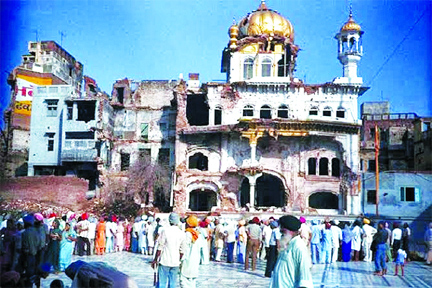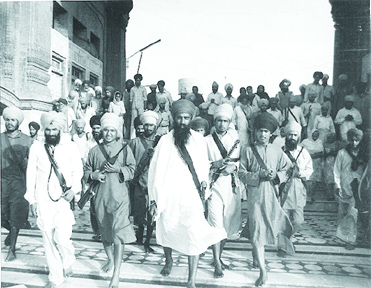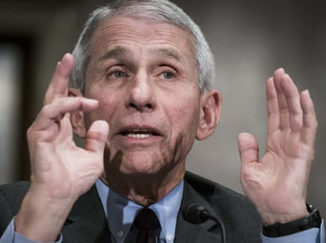
The military action at the Golden Temple in 1984 has left a lasting impact on generations of Sikhs, leaving many to try and piece together fragments of painful pasts.

It’s been 39 years since the Indian Army conducted an operation to flush out militants from the Golden Temple in Amritsar, in June, 1984. Operation Bluestar had a huge impact on Indian politics in the ’80s. It happened 39 years ago but it feels as if it was yesterday – the heart, body and mind still feel the tremors of the emotional earthquake it caused. The force of those tremors intensifies every year when June 6 approaches.
Operation Blue Star (saka neela tara), a name given to a dreadful military action at the Sikhs’ holiest shrine, the Golden Temple in Amritsar, was launched on June 2, 1984, with a ‘national broadcast to the nation’ by then prime minister Indira Gandhi. It was claimed to have been completed successfully on June 6 with the ending of the last resistance by Sikh combatants to the army’s entry at the Temple. State media (TV and radio) and other non-state media outlets praised the operation for saving India’s ‘unity and integrity’ from ‘anti-national’ Sikh secessionism.
The most reliable estimates of the total number of deaths during Operation Bluestar range from 5,000 to 7,000. It was a tragedy that could have been avoided if – and it is a big if – Indira Gandhi had had the vision to reach a political settlement with the moderate Akali leadership. Most Akali Dal demands – regarding federal decentralisation, river water rights, territorial readjustment and the transfer of Chandigarh to Punjab as its capital – could have been negotiated. Rajiv Gandhi did agree to each of these demands, and many more besides, in the 1985 Rajiv-Longowal Accord. He implemented none.
Operation Blue Star was a military operation that was carried out in June 1984 to flush out armed militants who were holed up in the Golden Temple. The operation had to be carried out in order to get back the control of the Golden Temple (Harmandir Sahib) from the militants.
The Harmandir Sahib, also known as the Golden Temple, is considered as the holiest site for Sikhs.
In the first week of June, 1984, the Indian military carried out an operation within the premises of the Harmandir Sahib or Golden Temple. The operation, which was carried out under the orders of then prime minister Indira Gandhi, was done so to save the sanctity of the holy site by flushing out the Sikh extremist religious leader Jarnail Singh Bhindranwale and his armed militant group.
Bhindranwale, who was reportedly backed by Pakistan’s ISI, had made his demands clear – he wanted the Indian government to pass a resolution which would allow India to be divided, thereby creating a new country for Sikhs called ‘Khalistan’. Radical separatist Jarnail Singh Bhindranwale had started laying the groundwork for his demand in 1982, and by mid-1983 managed to gain support for his plan to divide India. His operations and plans were reportedly supported by Pakistan’s ISI, which helped him in spreading militancy in the state, and also provided him with arms and ammunition.
In mid-1983, Bhindranwale and his armed militant group entered the Golden Temple (Harmandir Sahib complex) and took over its control. They then set up a base inside. Taking back the control of the Golden Temple from armed militants and preserving its sanctity was not easy. Being the holiest site for Sikhs made the decision even tougher to take. But after nearly a year of consultations and trying to negotiate, then prime minister Indira Gandhi decided that the only option left was to carry out a military operation. This led to the Operation Blue Star.
Late at night on June 2, 1984, the Indian Army carried out Operation Blue Star. Curfew was imposed across Punjab. No one was allowed to travel to or from the state. All channels of communication were blocked as well. The operation was considered a success, at the end of which Bhindranwale and his group of militants were killed. However, there were casualties among civilians and armed forces personnel as well.
Though the Golden Temple was restored and made free of militants and arms, the operation was criticised by Sikhs the world over, since it was carried out at their holiest site of worship.
Background of the Khalistan Movement
Since the early 1970s, radical separatists spearheaded a bloody campaign to carve out an independent, radial Sikh state known as Khalistan or commonly as the “Land of the Pure” in Punjab and other parts of Northern India.
The roots of the Khalistan movement lie back in the British colonial policies of the late 1800s as well as the early 1900s which sought to divide the Sikhs and Hindus. Sikhs were recruited into the British army in large numbers and were used against Hindu rulers that rebelled against the British Raj.
After the Indian independence in 1947, tensions between the state of Punjab and the central Indian government started taking place, leading to grievances amongst many Sikhs against the Indian government.
Punjab was trifurcated into the states of Haryana, Punjab, and Himachal Pradesh in 1966, along linguistic lines which created resentment amongst many Sikhs that the historic borders of Punjab were being further divided after it had already been divided between India and Pakistan in the partition of 1947.
Many Sikhs also resented sharing the joint capital of Chandigarh with the nearby Haryana, and viewed the water-sharing agreements with Haryana as unjust and unfair and favoring farmers in Haryana to the detriment of those in Punjab.
Sikh religious leaders were getting apprehensive about the Sikh community losing its identity and culture, and wanted a greater share of state powers for Punjab.
These policies were perceived by the Sikh community as religiously motivated policies of discrimination against them and were further exploited by radical leaders, who built a perception that Sikh interests could only be in safe hands in an independent Sikh region of Khalistan.
The Khalistan movement further peaked in the decades of 1980-1990s and the violent campaign included bombings, kidnappings, assassinations, as well as selective killing and massacres of civilians.
In response to this movement, and in an attempt to end militancy in Punjab, the Indian security forces and local Punjab police responded with force.
It left a deep scar on the political, social, and cultural landscape of Punjab.
Key Points of Operation Blue Star
Operation Blue Star consisted of a two-stage operation: the first one was known as Operation Metal, which was restricted to the elimination of the armed militants present inside the Golden Temple complex. This was followed by another operation called Operation Woodrose, which was carried out across the state to ensure that all suspects were either captured or killed. Following was the turn of events in the operation Bluestar:
– The Golden Temple complex, or commonly the Harmandir Sahib, is a revered religious site for Sikhs and is considered the holiest shrine in the Sikh religion.
– In 1984, a group of militants led by Jarnail Singh Bhindranwale took refuge inside the complex, along with a large number of armed supporters around him.
– Operation Blue Star, which began on June 3, 1984, involved the deployment of thousands of Indian Army troops, tanks, as well as artillery around the Golden Temple complex. – Operation Blue Star was commanded by Lt. General Kuldip Singh Brar, operating under General Sundarji. – On 3rd June, a 36-hour curfew was imposed in Punjab, detaching the state from all modes of communication, electricity, and transport.
– Thousands of Sikhs had gathered inside the complex of the Golden Temple to celebrate the martyrdom anniversary of Guru Arjan Dev, however, they all were trapped inside the Gurudwara after the said curfew was imposed on 3rd June.
– The Indian Armed Forces stormed the Harmandir Sahib complex on the night of June 5, and operation Blue Star lasted for another 5 days, during which heavy gunfire and explosions rocked and affected the complex, causing significant damage to the temple and surrounding buildings.
– The Akal Takht was heavily equipped with sandbags and gun emplacements in its windows and arches from where the dissidents were able to fire at any commandos who made their way in front of the Gurudwara.
– The forces had full control of Harmandir Sahib by the morning of June 7. Sikh leaders JS Bhindranwale and Shabeg Singh were killed in the operation.
– Operation Blue Star cleared terrorists from the Golden Temple compound but it received backlash from the Sikh community worldwide.





Be the first to comment